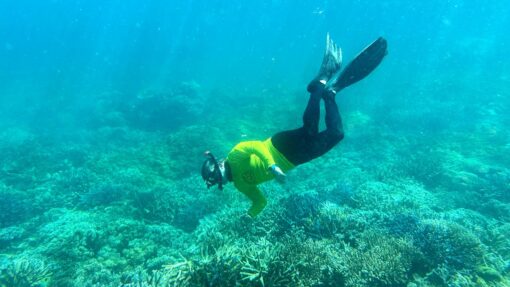Rubble-loving fish a ‘glimmer of hope’ for Barrier Reef
Fraser Barton |
Coral bleaching and climate change is not all gloom and doom on the Great Barrier Reef, with fish seeking out coral-rich areas in a show of resilience, researchers say.
Using 26 years of data from Orpheus Island, researchers noticed colourful butterflyfish and coral-associated goby were no longer apparent following a mass bleaching event in 1998.
The island’s reef is instead now home to “rubble-loving” fish, according to James Cook University lead researcher Helen Yan.
“We think they’re very resilient because they actually prefer this kind of degraded reef system,” Ms Yan told AAP.
“They like rubble, they like dirt, they don’t really care about live coral. So when all the following disturbance events happen, they didn’t really care.
“It didn’t really faze them too much.”
Researchers set nets on the reef, stunning fish with a combination of clove oil and ethanol to collect data for the study.
They were then able to count even the smallest fish on the reef, leading to their annual datasets compiled over a 26-year period.
Ms Yan said ocean warming in 1998 led to the first major bleaching event which forced colourful fish away to other reefs, or to death.
But fish communities remained stable over time, despite the occurrence of extreme sedimentation, cyclones and mass coral bleaching.
“It provides a little glimmer of hope – climate change is a big problem and we know that our reefs are changing, bleaching events are increasing in severity and different corals are exhibiting different responses,” she said.
“But these underlying fish communities may actually be a little bit more resilient than we think.
“So it’s kind of like that glimmer of hope looking into the future. Yes, there’s a lot that we need to do, but it’s not all doom and gloom.”
AAP


